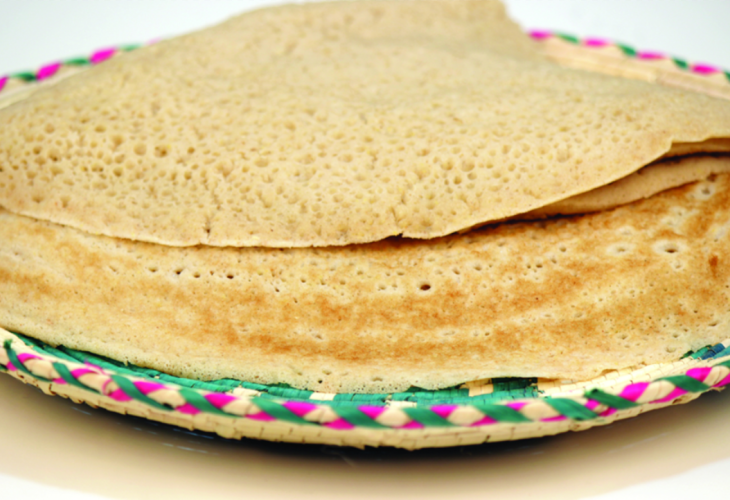Jewish Law
What Is Challah? The Meaning, Laws, and Traditions Behind the Bread We Eat on Shabbat
Discover the spiritual symbolism and practical halachic (Jewish legal) rules behind Judaism’s most beloved bread.
 (Photo: shutterstock)
(Photo: shutterstock)Challah is more than just delicious braided bread served on Friday night. It’s rich in symbolism and halachic (Jewish legal) meaning. From mystical insights to practical baking laws, here’s what you need to know about challah and the commandment of separating a portion of dough.
The Origins and Symbolism of Challah
Why is the traditional Shabbat bread called “challah”? One reason is to remind us of the mitzvah (commandment) of hafrashat challah, separating a small portion of dough and setting it aside as sacred (Asei LeAvraham on Orach Chaim 280).
Another explanation is rooted in the verse, “Give me neither poverty nor wealth; feed me my allotted bread [lechem chuki]” (Proverbs 30:8). The Hebrew initials of this phrase spell the word challah. According to the Zohar (Yitro 88a), Shabbat is the source of blessing for the entire week, and challah that is prepared in honor of Shabbat embodies spiritual nourishment (quoted by Rabbi Tzvi Hirsch of Rimanov in Otzar Pelaot HaTorah).
When Does One Need to Separate 'Challah'?
Not all baked goods require hafrashat challah (separation of challah). Here are some practical cases:
Lachuch (Yemenite spongy flatbread): It is not necessary to separate challah when preparing a dough like "lachuch" that cooks quickly (around 30 seconds). If it takes longer to cook, one should separate challah (Yalkut Yosef, Otzar Dinim La’isha, p. 694).
Sufganiyot (jelly doughnuts): Though this dough is deep-fried, since it is thick, one must separate challah without a blessing (Baruch Omer Responsa, Yoreh De’ah 209).
Kugel made from noodles: If the batter is large enough and the kugel is baked, one must separate challah, even if challah was already separated from the noodles (Asher HaIsh, rulings of Rabbi Elyashiv, vol. 2, pp. 166–167).
Microwave baking: Bread baked in a microwave still requires the separation of challah (Asher HaIsh, vol. 2, p. 167).
Dough made only with eggs: Challah should be separated without a blessing (Halichot Olam, vol. 5, p. 265).
Dough for kuba (a type of dumpling): It is not necessary to separate challah, since it's not meant for baking (Binyan Av Responsa, vol. 4, siman 60).
Dough that is mostly rice flour: If there’s a noticeable wheat flavor, challah should be separated, even if the wheat flour is a minor ingredient (Yalkut Yosef, p. 741).
Halachic Insights and Special Scenarios
One is required to separate challah when they use an amount of flour that is equivalent to 43 eggs, which is approximately 1,560 grams or 3.4 pounds (Shulchan Aruch, Yoreh De’ah 324:1; Halichot Olam, vol. 5, p. 253). Interestingly, the alphanumerical value of the Hebrew word challah is 43 (Bamidbar Rabbah 18:21).
Challah separation is traditionally a mitzvah for women, but men are encouraged to fulfill it at least once a year, especially during the Ten Days of Repentance between Rosh Hashanah and Yom Kippur (Yalkut Yosef, Yamim Noraim, p. 134).
If a woman separated challah in her mind without saying, “This is challah,” it still counts (Yechaveh Daat Responsa, vol. 6, siman 59).
If a child eats the separated challah before it’s burned, the mitzvah has still been fulfilled (Yalkut Yosef, p. 737).
A preschool teacher conducting a baking activity with children should separate challah without a blessing (Asher HaIsh, vol. 2, p. 171).
If someone baked matzot for others and forgot to separate challah and only realized this on the night of Pesach after the matzot were already distributed, they may still separate challah even on the holiday itself, even though the majority of the matzot are no longer in their possession (Yalkut Yosef, p. 763).
Bringing Holiness to the Shabbat Table
It is customary to place a cloth over the challah, rest one’s hands upon it, and recite the verse: “This is the table that is before Hashem” (Ezekiel 41:22).
This practice reflects a deeply spiritual concept. The Shabbat table is not merely a place for physical nourishment; it is also an altar. Through the mitzvah of separating challah and honoring Shabbat, our homes are transformed into a sacred space where the material and the spiritual meet.

